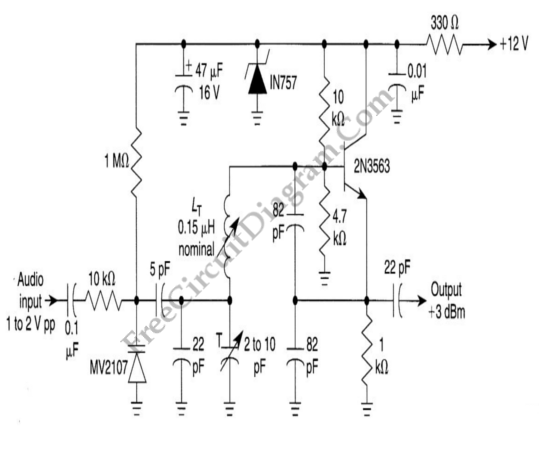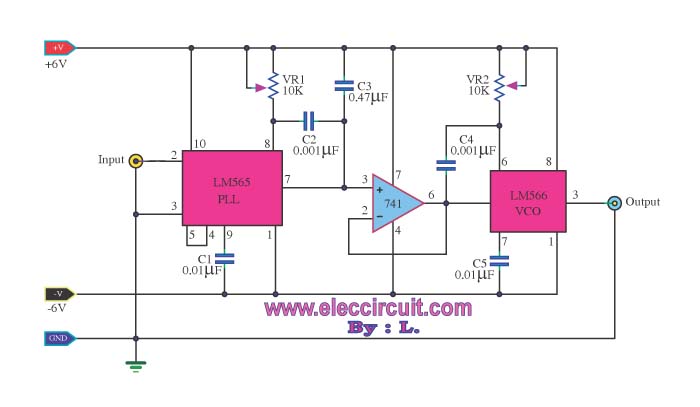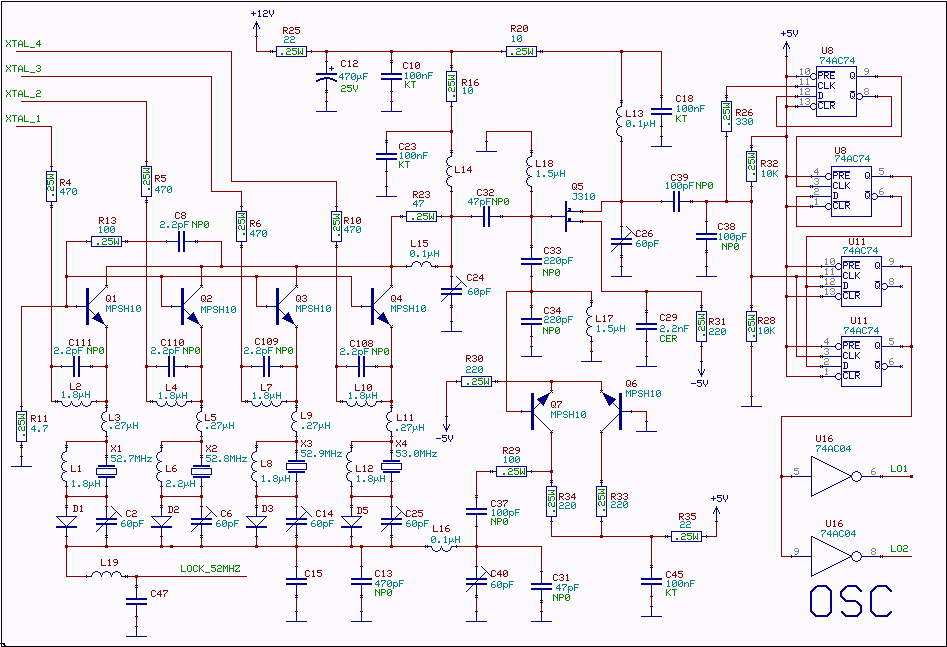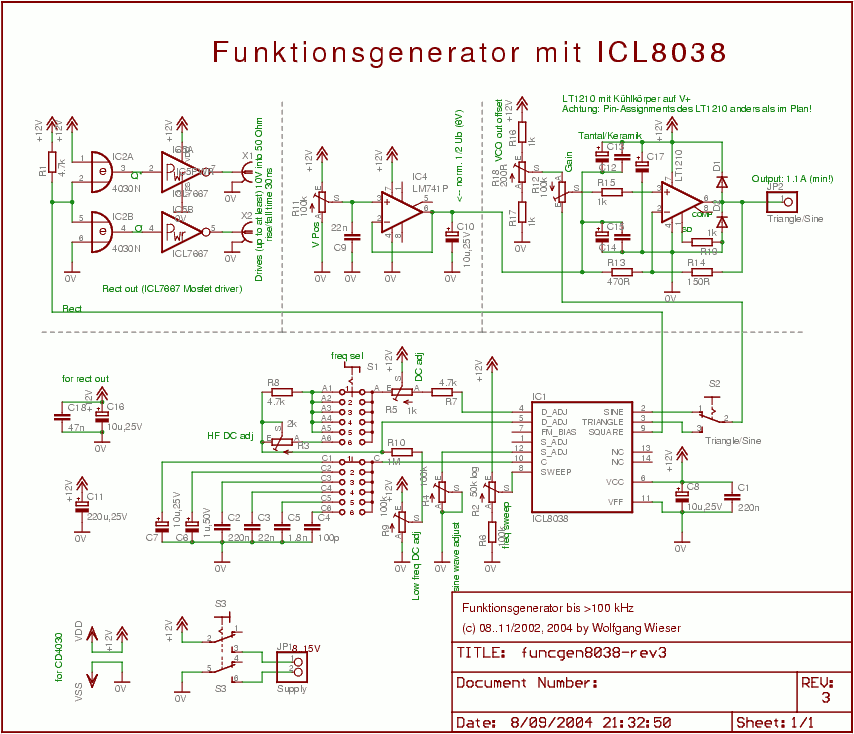
Frequency Modulated Oscillator (for FM Transmitter)

An oscillator can be constructed using an LC (inductor-capacitor) tank circuit. By varying the capacitance of the capacitor in the LC tank circuit, the frequency of the oscillator can be adjusted.
An LC tank circuit serves as a fundamental building block for oscillators, utilizing the resonance between an inductor (L) and a capacitor (C) to generate oscillations. The resonant frequency (f) of the circuit can be calculated using the formula:
f = 1 / (2π√(LC))
where L is the inductance in henries and C is the capacitance in farads. By adjusting the capacitance of the capacitor, the resonant frequency can be tuned to the desired value, allowing for precise control over the output frequency of the oscillator.
In practical applications, the LC tank circuit is often combined with active components such as transistors or operational amplifiers to provide the necessary gain and ensure sustained oscillations. The inductor and capacitor are typically connected in parallel or series configuration, depending on the specific oscillator design.
Additionally, the quality factor (Q) of the tank circuit plays a crucial role in determining the stability and sharpness of the oscillation frequency. A higher Q factor indicates a lower rate of energy loss relative to the energy stored in the circuit, resulting in a more stable oscillation.
Overall, the LC oscillator is widely used in various electronic applications, including radio frequency transmission, signal generation, and clock generation in digital circuits. Its simplicity and effectiveness make it a popular choice in both educational and professional electronic design.An oscillator can be built using LC (inductor-capacitor) tank circuit. When we vary the capacity of the capacitor in LC tank circuit then the frequency of the.. 🔗 External reference
An LC tank circuit serves as a fundamental building block for oscillators, utilizing the resonance between an inductor (L) and a capacitor (C) to generate oscillations. The resonant frequency (f) of the circuit can be calculated using the formula:
f = 1 / (2π√(LC))
where L is the inductance in henries and C is the capacitance in farads. By adjusting the capacitance of the capacitor, the resonant frequency can be tuned to the desired value, allowing for precise control over the output frequency of the oscillator.
In practical applications, the LC tank circuit is often combined with active components such as transistors or operational amplifiers to provide the necessary gain and ensure sustained oscillations. The inductor and capacitor are typically connected in parallel or series configuration, depending on the specific oscillator design.
Additionally, the quality factor (Q) of the tank circuit plays a crucial role in determining the stability and sharpness of the oscillation frequency. A higher Q factor indicates a lower rate of energy loss relative to the energy stored in the circuit, resulting in a more stable oscillation.
Overall, the LC oscillator is widely used in various electronic applications, including radio frequency transmission, signal generation, and clock generation in digital circuits. Its simplicity and effectiveness make it a popular choice in both educational and professional electronic design.An oscillator can be built using LC (inductor-capacitor) tank circuit. When we vary the capacity of the capacitor in LC tank circuit then the frequency of the.. 🔗 External reference





